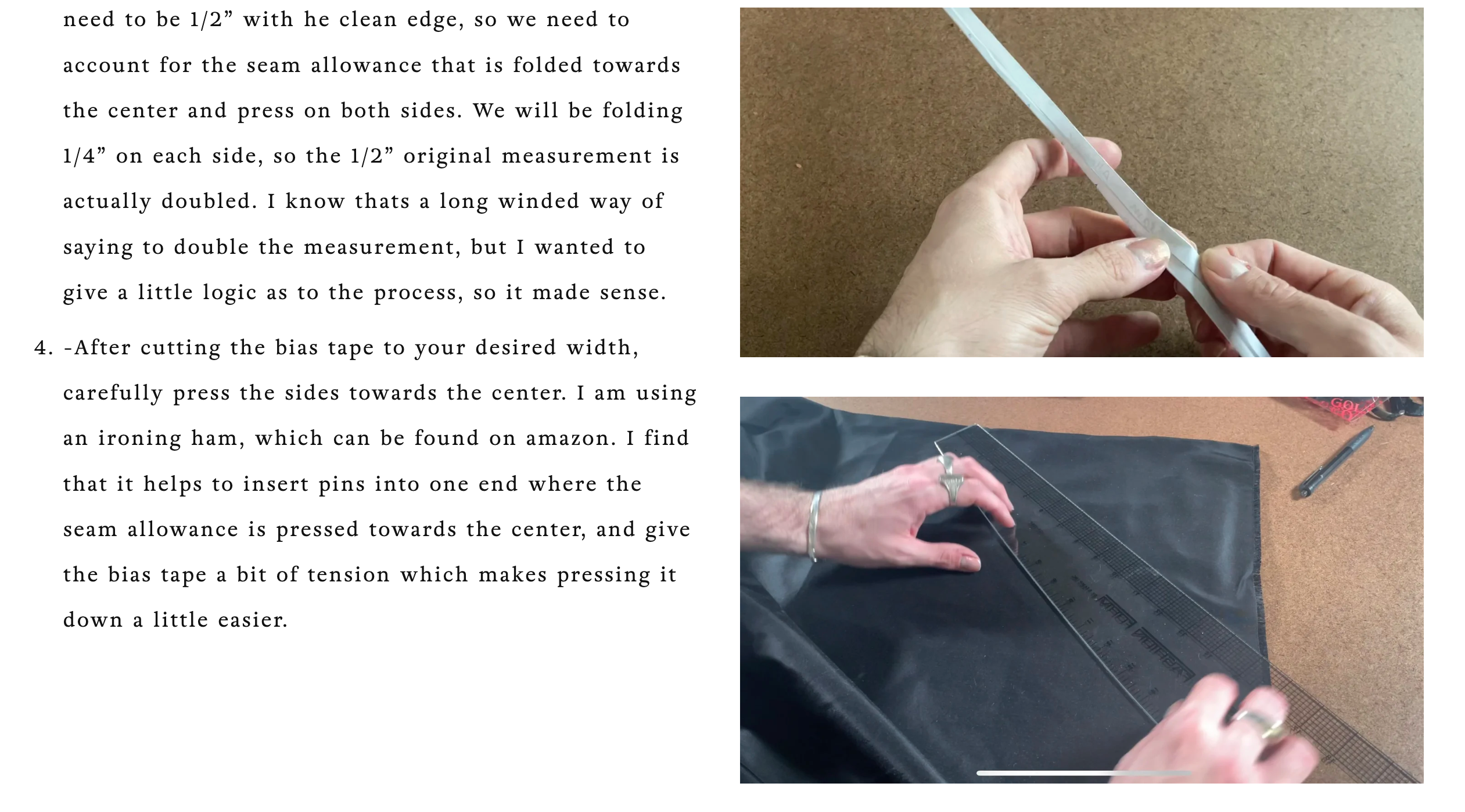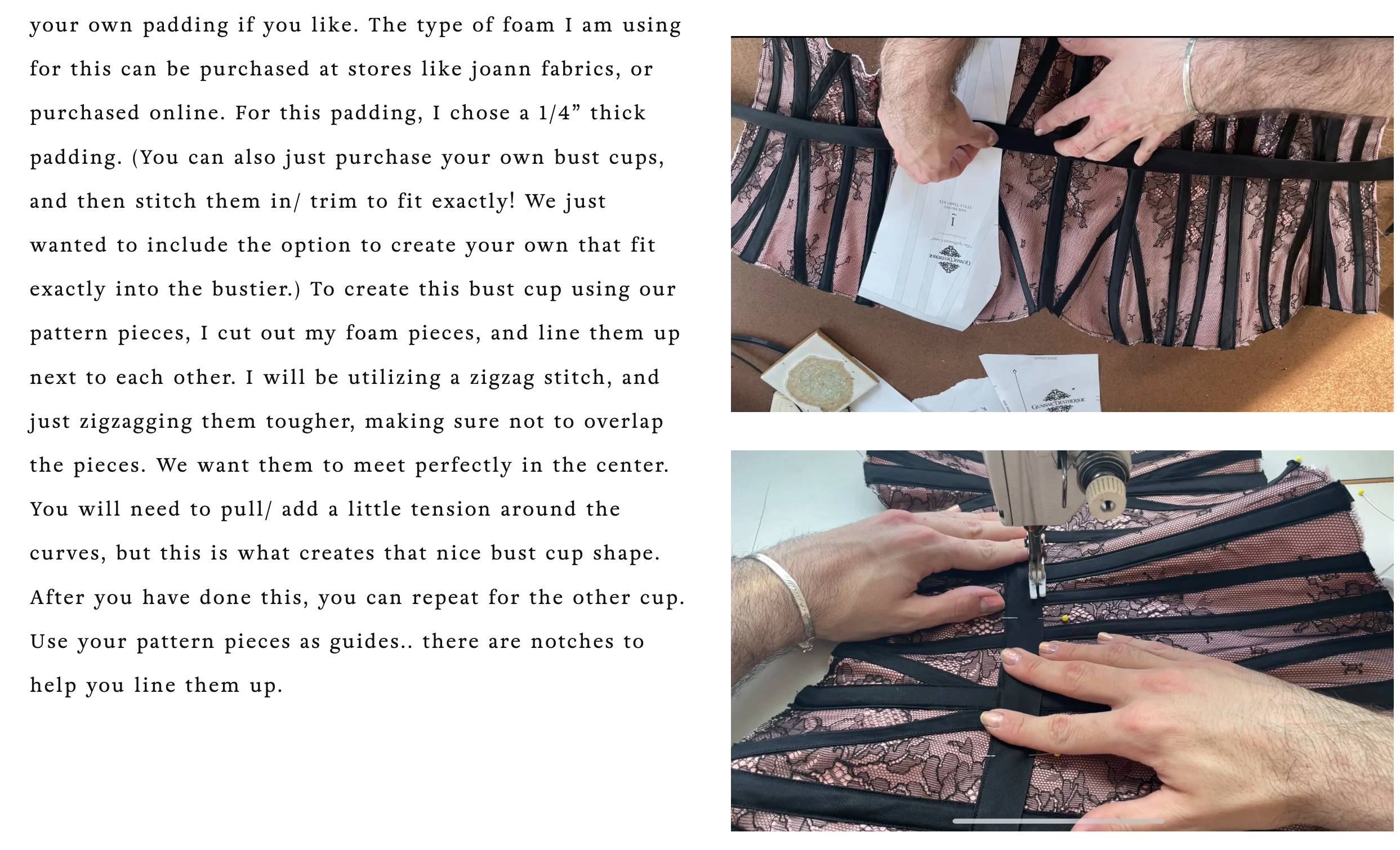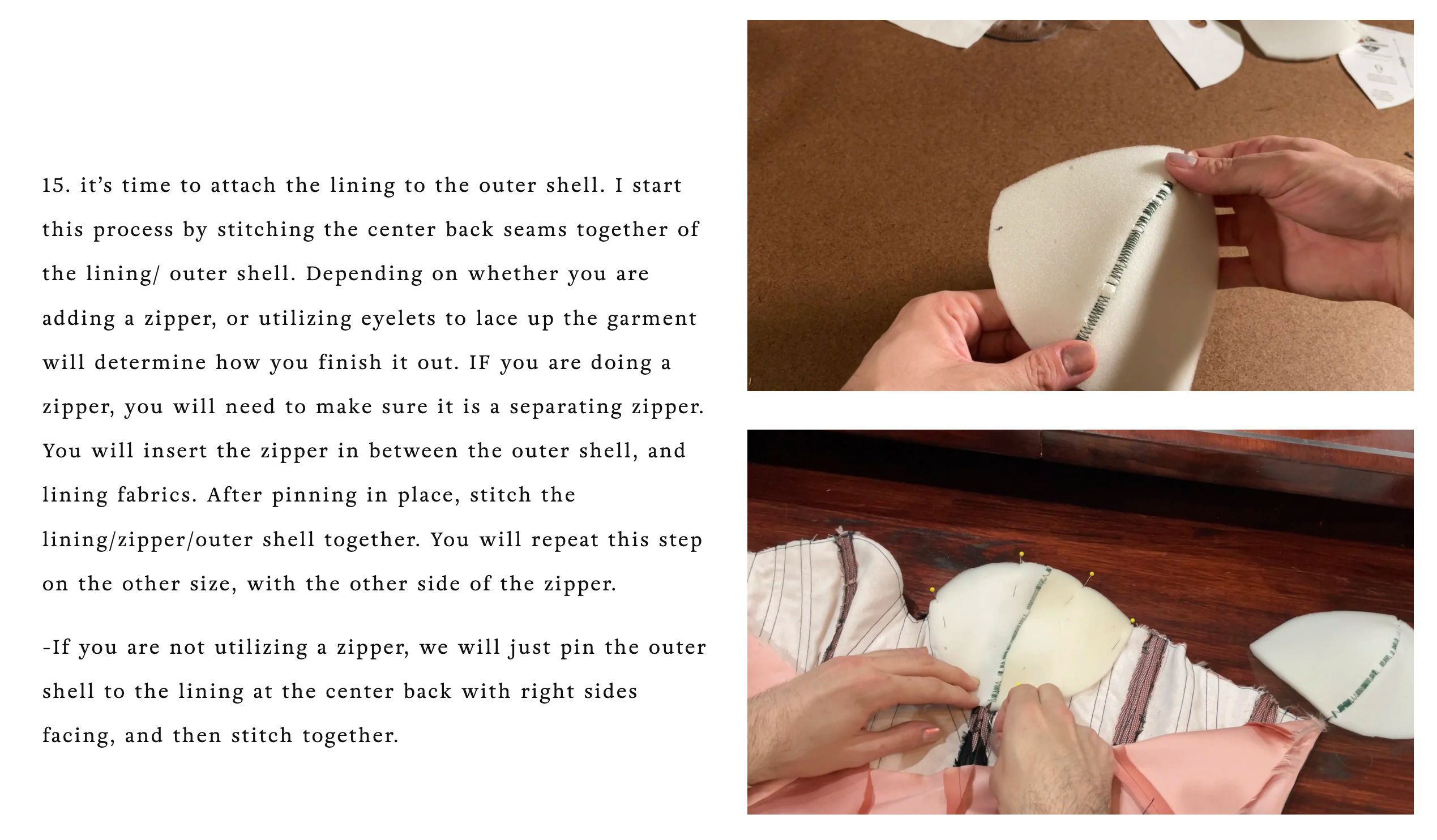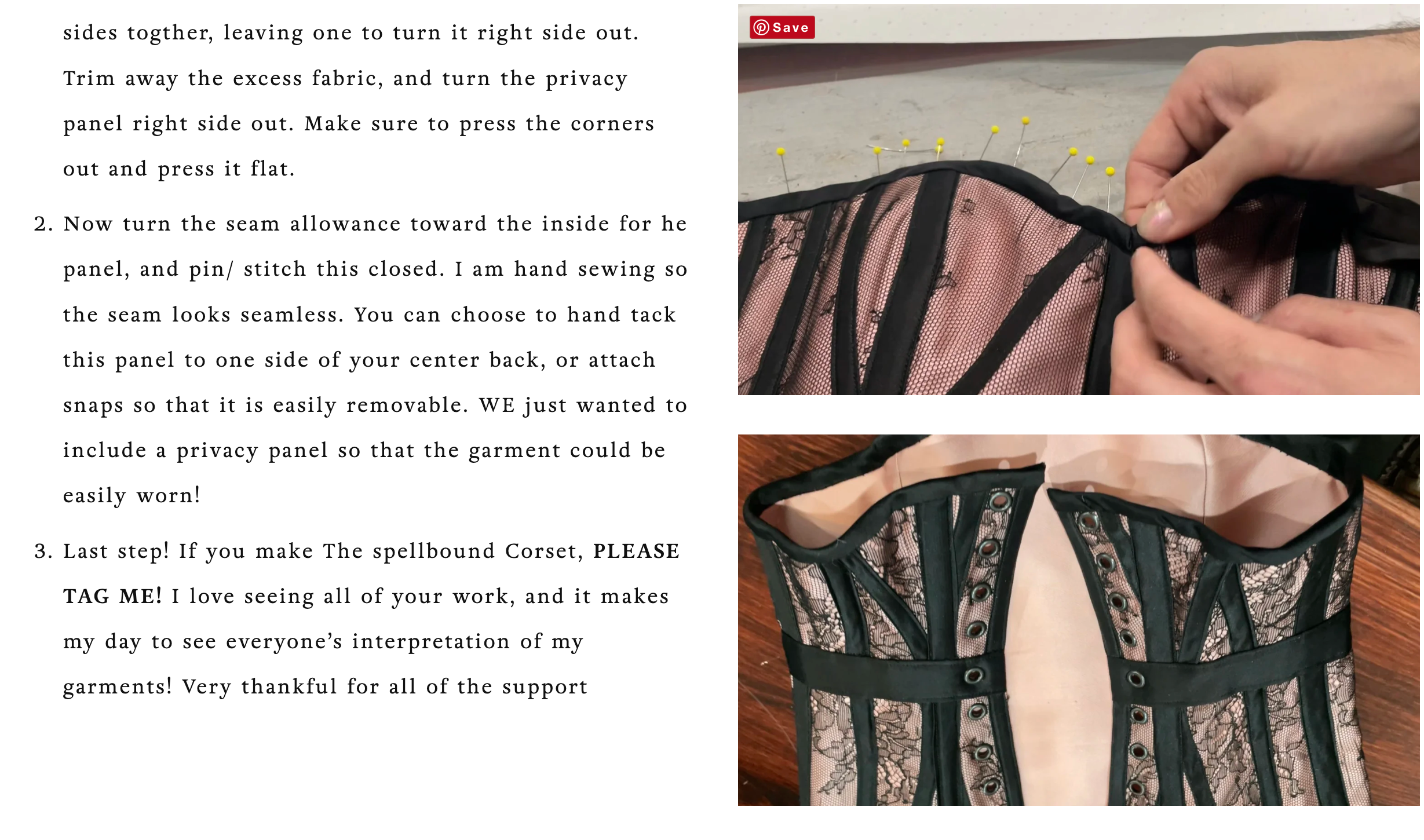The Spellbound Corset Sewing Pattern Guide

Hello, and welcome to the Spellbound Bustier/ Corset inspired pattern. This garment encompasses the glamour of the vintage burlesque scene, with a modern twist. The boning style lines could be altered and changed a hundred ways to fit your own personal aesthetic, but we have included a layout for this if you want to create this pattern exactly how I have.
Before we hop into the pattern pieces, and how to construct, I think we should take a moment to talk about the inner workings of this “Corset.” I use the Word Corset very loosely here, as corsets have a long and deep history of construction, and symbolism that is wildly fascinating to delve into.
Below are the written sewing instructions, and I also filmed a step by step Youtube video of the entire creation process of this dress! When you make your corset, please tag me! I would love to see what your garment looks like!!























